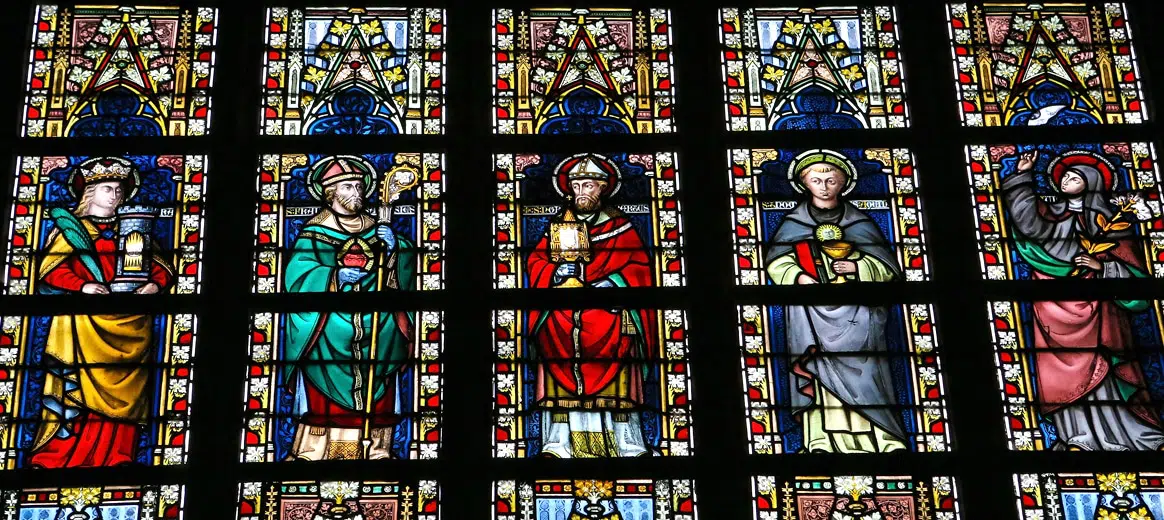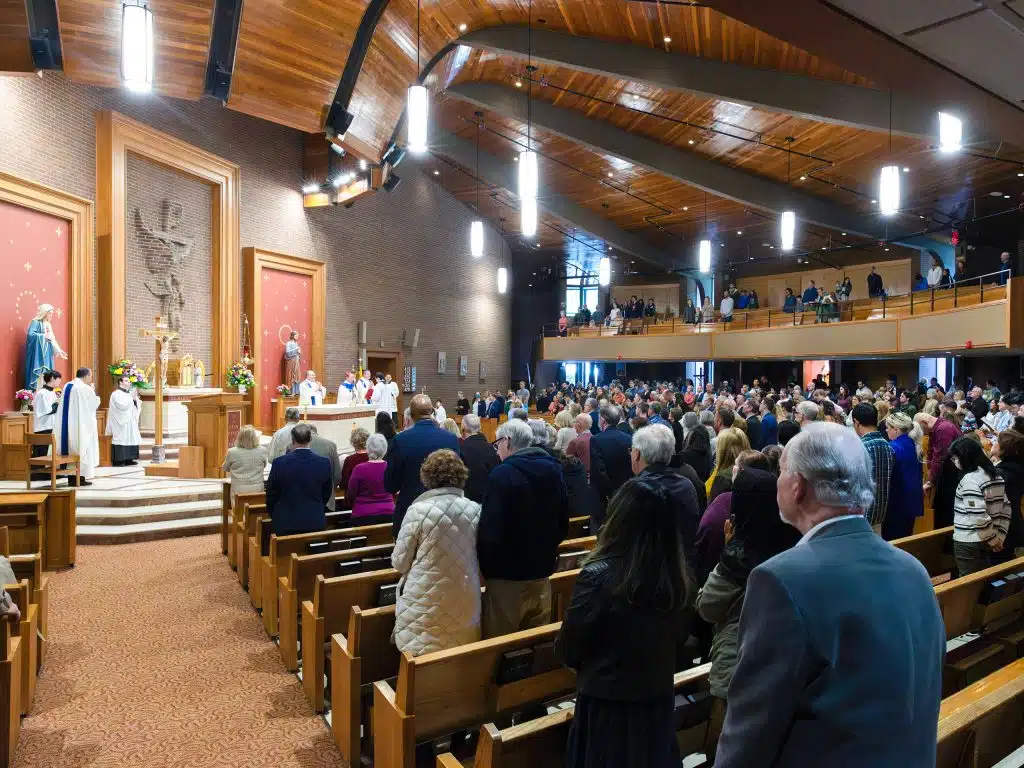St. Andrew the Apostle
Feast day: Nov. 30
St. Andrew and his brother St. Peter were sitting in their fishing boat on the Sea of Galilee, repairing their nets, when Christ called to them saying, “Come follow me and I will make you fishers of men.” Although the brothers did leave their boat to follow the Lord, they never stopped fishing for fish-it was how they supported themselves and their families.
Time and again the gospels take us back to the Sea of Galilee: on one occasion Jesus climbed into Peter and Andrew’s boat to preach to a crowd on the shore; on another, while the brothers and some of the other disciples were out fishing, they saw Christ coming to them, walking on the water. After a long night of fishing and catching nothing, Christ urged the brothers to go out to the deepest part of the sea and lower their nets one more time. This time the catch was so great that the fishing nets were about to break-Peter and Andrew had to signal to their fellow apostles and business partners, James and John, to come help them haul in the fish. And when there was nothing for the crowd of 5000 to eat, it was St. Andrew who brought forward a boy who had five barley loaves and two fish, which Christ used to feed the multitude.
The Acts of the Apostles does not tell us what became of St. Andrew after the first Pentecost, when the disciples scattered to carry the gospel to every corner of the Mediterranean world. Tradition says that St. Andrew carried the gospel to Greece, although the Russians believe that he also traveled into their country. At the town of Patras on Greece’s western coast St. Andrew was arrested and tied to an X-shaped cross. The legend claims it took him three days to die, and all the while he hung on the cross St. Andrew preached to anyone who passed by.
In Scotland during the Middle Ages St. Andrew was also venerated as the patron of women who wanted to find a husband. Unfortunately, this devotion sprang out of superstition. As Christianity spread across Europe, missionaries found that pre-Christian fortune-telling practices were often the toughest to root out. Some parish priests, in desperation, “baptized” the old superstitions by trying to replace the old folk magic with prayer to the saints. In Scotland women waiting for a husband were encouraged to pray to St. Andrew, no doubt because he is Scotland’s national saint.
We know they prayed to St. Andrew, but they also hedged their bets by incorporating some of the old arts of divination. On St. Andrew’s Eve, Nov. 29, a single Scotswoman would throw her shoe at the door. If it landed with the toe pointing out, it meant that within a year she would marry and leave her parents’ house. If it landed with the toe pointing into the room, it meant she would not wed that year. This custom was so deeply rooted it even survived the Protestant Reformation, living on in remote corners of Scotland into the 19th century.
Craughwell is the author of Saints Behaving Badly (Doubleday, 2006) and Saints for Every Occasion (Stampley Enterprises, 2001).



Disconnected spirituality